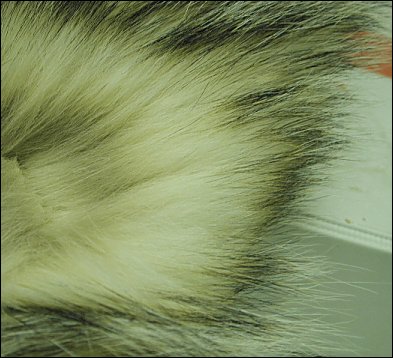

When the snow begins to fly and the wind to howl, the thoughts of some women turn to fur coats, as politically incorrect as that may be. While often a luxury meant more to demonstrate status than for warmth, fur is a matter of life and death to many wild creatures—even those dwelling in the desert.
Fur has a variety of functions, from camouflage to intimidation, but its most basic use is as insulation. Fur traps air, and air unable to circulate freely acts as a temperature barrier, slow to warm and slow to cool. Even the sparse body hair of people may help maintain a thin layer of warm air next to the skin by disrupting warmth-stealing breezes.
But the fur coats worn by most of our mammals are not merely thicker
versions of the human covering, but consist of two layers. Long, coarse, protective
guard hairs reduce matting and wear on an insulating layer of short, fine, thick
underhair. Only the combination of the two allows survival in the periodically harsh
winters of the desert.

Contributor: Arthur H. Harris, Laboratory for Environmental Biology, Centennial Museum, University of Texas at El Paso.
Desert Diary is a joint production of the Centennial Museum and KTEP National Public Radio at the University of Texas at El Paso.

The fur of an American Badger (Taxidea taxus) has been parted to show the thick under fur and the long guard hairs. Photograph by A.H. Harris.
Vaughan, T. A. 1986. Mammalogy. 3rd Ed. Harcourt Brace Jovanovich, Orlando, Fl. 576 pp.
University of Michigan Museum of Zoology